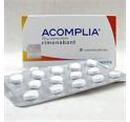WHAT IS OMEGA 3?
ALL YOU NEED TO KNOW AND MORE!
Getting the balance right!
There are three types of fat: saturated, monosaturated and polyunsaturated which divide into two groups of essential fatty acids (EFAs): omega 3 and omega 6 – essential because the body cannot make them on its own between which there needs to be a strict balance. Todays Western diet has resulted in an imbalance between the essential fats which holds potentially detrimental effects to long-term health.
Before trans fats and processed foods were added to our diets, the ratio of omega 6 to omega 3 fats was about 4:1 a ratio associated with a 70% decrease in total mortality rate in the secondary prevention of heart disease. One recent study found that the ratio of omega 6 to omega 3 fats consumed today was closer to 16:1.
Other researchers say that the typical Western diet contains 11-30 times more omega 6 than omega 3 fats. And in a study of asthmatic patients, a 10:1 ratio was associated with adverse conditions.
Why does this matter? When the ratio between them becomes imbalanced, that is, when omega 6s overwhelm the omega 3s, the body experiences inflammation, which can result in serious chronic inflammatory conditions, such as heart disease, cancer, diabetes, hypertension, arthritis, asthma and some auto-immune disorders.
The basics
Your daily intake of omega 3 can come from oily fish such as salmon, herring, mackerel, sardines and fresh tuna plus certain plant oils, such as olive and flax. As a guideline, the Department of Health recommends 2-3 portions of oily fish per week for adults.
On average, people in the UK eat only a third of a portion of oily fish a week. Over seven out of 10 do not eat any at all. The table below indicates mean % UK population consumption of fish per week:
Consumption/week Males Females Total
Total Fish 28.5% 22.5% 25.2%
White Fish 31.2% 21.3% 25.7%
Oily Fish (excl. canned tuna) 26.4% 23.6% 24.8%
Shellfish 17.6% 15.8% 16.6%
For those who find it difficult to consume the advised weekly fish allowance, especially for those who are not keen on eating fish, or as an additional fish source for those who do, omega 3 supplements are an ideal option. The best choices come in a concentrated liquid or capsule format and adults should take at least the Joint Health Claims Initiative (JCHI), recommendation of 450mg per day to gain the maximum benefit.
Not all omega 3 is equal
Omega 3 supplements are made up of three main long chain fatty acids, EPA, DPA and DHA which come in different concentrations and at different price points. To ensure that you get the best out of your supplement you should take one with the highest concentration of the fatty acid that meets your needs:
Signs of best quality
Check the ingredient list on the pack to find out the content and dosage of each fatty acid. Look for more of EPA and DPA if you are taking omega 3 for heart health and DHA for brain health. Remember you are looking for a minimum omega 3 content of 450mg for the supplement to be beneficial.
Croda has developed the PureMax sign of quality. Products displaying the PureMax logo have gone through a unique purification and concentration technology process. The process removes heavy metals, environmental pollutants and oxidative impurities to ensure the highest quality oils. The end products have minimal impurities and contain the selectively concentrated fatty acids. Higher concentration offers greater consumer convenience, improved palatability, better dose compliance and greater cost-efficiency.
Benefits of the key fatty acids
EPA (Eicosapentaenoic Acid)
Helps improve blood flow, reducing the risk of heart attack or stroke
EPA has been shown to impart an antithrombotic effect by reducing blood clotting
Proven to have preventative effects on atherosclerosis (hardening of the arteries)
Dietary intake of EPA can improve the balance of LDL and HDL cholesterol
Dietary intervention with EPA may reduce vascular inflammation which can alleviate rheumatoid arthritis and reduce joint inflammation
EPA contains mood balancing properties and can enhance brain function
DHA (Docosahexaenoic Acid)
Improving brain function DHA has been shown to improve mood disorders such as depression and positively affect mental function and curb aggression
DHA supports eye health, helping to improve overall eye function
Pregnant and nursing mothers can improve the intelligence and happiness of their babies with DHA
Like EPA, DHA can improve cardiovascular health help lower blood pressure
Can improve the health of skin, nails and hair
Can help prevent the development of allergies and protect against the symptoms of hay fever, sinus infections, asthma, food allergies and eczema
DPA (Docosapentaenoic Acid)
DPA stimulates endothelial cell migration with an effect up to 10 times greater than EPA, which may enhance the reduction of atherosclerosis
DPA helps prevent the formation of blood clots which can block arteries and cause heart attacks or strokes
The levels of DPA in serum phospholipids can help prevent coronary heart disease
DPA has been positively linked with a reduction in the risk of peripheral arterial disease in smokers
Sources of omega 3
There are two main sources of omega 3. Marine fish oil and a vegetarian source of omega 3 containing Stearidonic Acid (SDA, C18:4 n-3) derived from echium oil.
Omega 3 is increasingly becoming a part of other food sources, largely by fortification. Fortified foods include margarine spreads, milk, yogurts, bread and certain eggs. However, to receive the JHCI recommendation of 450mg daily to help maintain a healthy heart, the amount you would need to eat of each of these is substantial. The following table illustrates how fortified foods contribute to an omega 3 enriched diet: –
Source: Croda Healthcare
It is unlikely that anyone would wish to swallow 164g of low fat spread or drink nearly two litres of milk per day. However, low levels of omega 3 can be gained from these sources; a balanced diet with a healthy awareness and intake of omega 3 fatty acids is beneficial.
Visit www.puremax.info for up-to-the-minute information about fish oil supplements
References:
o Arterburn LM, Bailey E, Oken H; Distribution, interconversion, and dose response of n-3 fatty acids in human, Am J Clin Nutr, 2006, 83, 1467S-76S
o Barton CL, Next-Generation Nutraceuticals . Food and pharma convergence in disease prevention and personalized nutrition, Business Insights Ltd, 2006
o Calder PC, Grimble RF; Polyunsaturated fatty acids, inflammation and immunity, European Journal of Clinical Nutrition, 2002, 26 Suppl 3, S14-S19.
o Gorman C, Park A, The Secret Killer. The surprising link between inflammation and heart attacks, cancer, alzheimers and other diseases, TIME, 2004, Feb
o Government Articles











 Researchers compared statistics on three major health indicators – Body Mass Index (BMI), choleserol and blood pressure over the past 28 years.
Researchers compared statistics on three major health indicators – Body Mass Index (BMI), choleserol and blood pressure over the past 28 years. A low carbon lifestyle means better health for all of us. Eating less meat could save 45,000 lives in the UK each year.
A low carbon lifestyle means better health for all of us. Eating less meat could save 45,000 lives in the UK each year.
![WalkFit Logo [640x480].jpg](https://www.elixirnews.com/images/entries/WalkFit%20Logo%20%5B640x480%5D.jpg)
![WF Image1 [640x480].JPG](https://www.elixirnews.com/images/entries/WF%20Image1%20%5B640x480%5D.JPG) Walkfit classes will last for one hour and promise to increase your heart rate, use your muscles and improve your mobility. The BMF instructors will carefully guide you through the activities and exercises of the class, making sure that you work to a level which is right for you. They will encourage and motivate the participants throughout the class so they are fun and sociable and you’ll wonder where the time goes. It’s a whole new type of social fitness – feeling healthier, having fun and making friends.
Walkfit classes will last for one hour and promise to increase your heart rate, use your muscles and improve your mobility. The BMF instructors will carefully guide you through the activities and exercises of the class, making sure that you work to a level which is right for you. They will encourage and motivate the participants throughout the class so they are fun and sociable and you’ll wonder where the time goes. It’s a whole new type of social fitness – feeling healthier, having fun and making friends.![WF Image 2 [640x480].JPG](https://www.elixirnews.com/images/entries/WF%20Image%202%20%5B640x480%5D.JPG)









